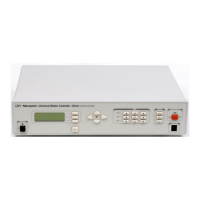B.1
Most of the time a blown fuse is the result of a more serious problem.
Fixing the problem should include not only correcting the effect
(blown fuse) but also the cause of the failure. Analyze the problem
carefully to avoid repeating it in the future.
A list of the most common problems and their corrective actions is
provided in
Table B.1. Use it as a reference but remember that a
perceived error is open to an operator error or has some other simple
solution.
PROBLEM CORRECTIVE ACTION
Turn on the main power switch
located on the front panel.
Verify with an adequate tester or
another electrical device (lamp,
etc.) that power is present in the
outlet. If not, contact an
electrician to correct the problem.
Plug the power cord in the
appropriate outlet. Observe all
caution notes and procedures
described in the System Setup
section.
Display does not
come on.
Replace the line fuse as described
in the System Setup section.
Beware that the fuse blows only
when a serious problem arises. If
the fuse blows again, contact
Newport for service.
Error message or
physically present
stage is declared
unconnected.
Trouble-Shooting Guide
CAUSE
Power switch is
turned off.
No electrical power
Power cord not
plugged in.
Blown fuse
Bad connection. Turn power off and verify the
motion device connection.
Bad component/ step/
cable
Turn power off and swap the
motor cable with another axis (if
cables are identical) to locate the
problem. Contact Newport for
cable replacement or motion
device service.
Red LED above
STOP ALL button
remains on.
Safety control
connector on the rear
of the ESP300 is
missing.
Plug connector in. If the
connector was lost, you can either
build one as shown in System
Setup in Appendix C.1.8, or call
Newport for a replacement.
Motor can not be
turned on.
Power button on the
display does not
appear when motor
power button is
pressed.
Verify that the motion device is
connected.
Table B.1: Trouble-Shooting Guide Descriptions
B-2 Appendix B – Trouble-Shooting and Maintenance

